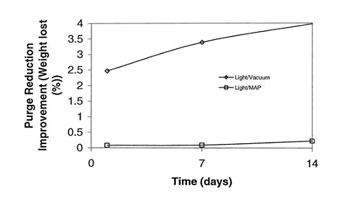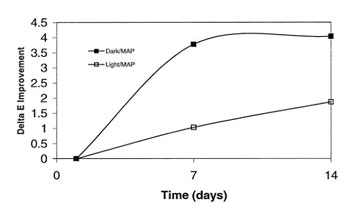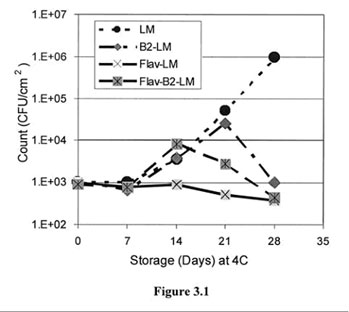
Flavex Technologies Introduces First Food Technology that Reduces Purge for Increased Yields
By Canadian Poultry
Features New Technology ProductionA new technology that simultaneously reduces juice purge in meat, poultry
and seafood by 3-to-4 percent, depresses microbial load and inhibits
the growth of Listeria monocytogenes has been introduced by Flavex
Technologies.
Two University Challenge Studies Confirm Findings of Flavex BioProtection Coatings™ on Meat, Poultry and Seafood
A
new technology that simultaneously reduces juice purge in meat, poultry
and seafood by 3-to-4 percent, depresses microbial load and inhibits
the growth of Listeria monocytogenes has been introduced by Flavex
Technologies, a division of The Arnhem Group, of Cranford, N.J. The
patent-pending development is believed to be the first food technology
to combine these critical capabilities.
Two university challenge
studies, conducted at Ohio State University, identified the remarkable
capability of Flavex BioProtection Coatings™—which are based on
Flavex’s well known protein products—to block the growth of Listeria
monocytogenes and to reduce purge and prevent color deterioration in
meats, poultry and seafood.
Economic Impact
“More
than a billion dollars is wasted each year, because of unattractive
discoloration in meat that occurs before unacceptable microbial counts
are reached,” Michael Bonner, president of The Arnhem Group, explained.
“One of the studies showed that the beef industry alone would save $762
million dollars if retail loss due to product unacceptability could be
reduced by only 3.6 percent.
“Flavex BioProtection Coatings
can dramatically increase shelf-life for packaged meat, poultry and
seafood products,” Bonner added. “The technology is so simple that it
can be applied in a local supermarket as well as in a major food
processing plant.”
Flavex Technologies is a division of The
Arnhem Group, which has produced multi-functional ingredients for the
food industry since 1980. The Arnhem Group provides innovative
ingredients to enhance the flavor of processed foods and beverages and
to aid food producers in designing food systems to meet the diet
demands of consumers.
Flavex BioProtection Coatings use a gel
matrix to reduce moisture exudates by 3-to-4 percent of gross weight in
carcass meat, roast, ground beef, beef tenderloins, pork loin, salmon
filets and chicken breast in comparison to control samples, the
university study found. Purge reduction also resulted when the coating
was applied to pork bellies, fresh pork livers, sausages and smoked
poultry pieces.
The coating matrix extends shelf-life by
providing a barrier to water and oxygen, thereby reducing purge,
microbial loads, color deterioration and rancidity.
A
reduction in color deterioration was noted when the coating was applied
to fresh beef loins, ham and bacon pieces, fresh pork chops, sausages,
turkey steaks and cod fish filet patties.
In addition to
protecting the food from bacterial growth and reducing juice purge, the
gel matrix has the added benefit of protecting many core ingredients
from heat, moisture and acidity during food processing.
By
reducing purge BioProtection Coatings limit microbial growth and
increase product safety. The reduction in purge also maintains better
flavor, texture, color and weight in meat, poultry and fish.
Danger of Listeria
The
control of Listeria monocytogenes—one of the most dangerous food-borne
pathogens—is a major problem for the food industry. The Centers for
Disease Control and Prevention note that virtually everyone who
contracts listeriosis, the disease brought about by Listeria
monocytogenes, is hospitalized. Of the 2,500 people infected in the
United States each year, 500 die—a death rate of 20 percent.
Listeria
monocytogenes can grow in temperatures down to 3° Centigrade, making
refrigeration ineffective in controlling the bacterium. Vacuum
packaging and modified atmosphere packaging have proven similarly
ineffective in controlling Listeria monocytogenes.
A listeriosis
outbreak is devastating for the individuals who become ill and for the
food processor that made the food, if the illness can be traced to its
facility. Food recalls and plant shut-downs costing millions of dollars
can result.
The patent-pending technology encapsulates flavor
oils, oleoresins and spices in a colloid gel. The gel matrix may be
used in gel form and injected or mixed into meat products, and it may
be used directly in the food system or further processed before it is
added to the food system.
Encapsulation assists in maintaining a
separation between the food processing ingredient and air, thereby
reducing the opportunity for oxidation, degradation or other chemical
reactions.
The Flavex BioProtection Coatings protect the food
ingredients even if high processing temperatures are used to convert
the matrix into a liquid.
Coatings Enhance Anti-Microbial Agents
Flavex
BioProtection Coatings inhibit the growth of Listeria monocytogenes by
themselves, and enhance the effectiveness of anti-microbial agents,
which can be added before, during or following the application of the
coating.
There is virtually no impact on the perceived smell or
taste of protected foods. They provide clean labeling, as the coatings
need not be declared on the front ingredients panel. Diapers, which are
conventionally placed beneath packaged meat, poultry and fish, can be
eliminated. This will make the packages more appealing to consumers.
Additional
information about Flavex BioProtection Coatings may be obtained from:
Flavex Technologies, a division of The Arnhem Group, 25 Commerce Drive,
Cranford, NJ 07016-3605. Toll-Free Telephone: (800) 851-1052, fax:
908-709-9221. E-mail: info@arnhemgroup.com, Website: www.arnhemgroup.com.
The following graphs are taken from the challenge studies conducted at Ohio State University:



Print this page